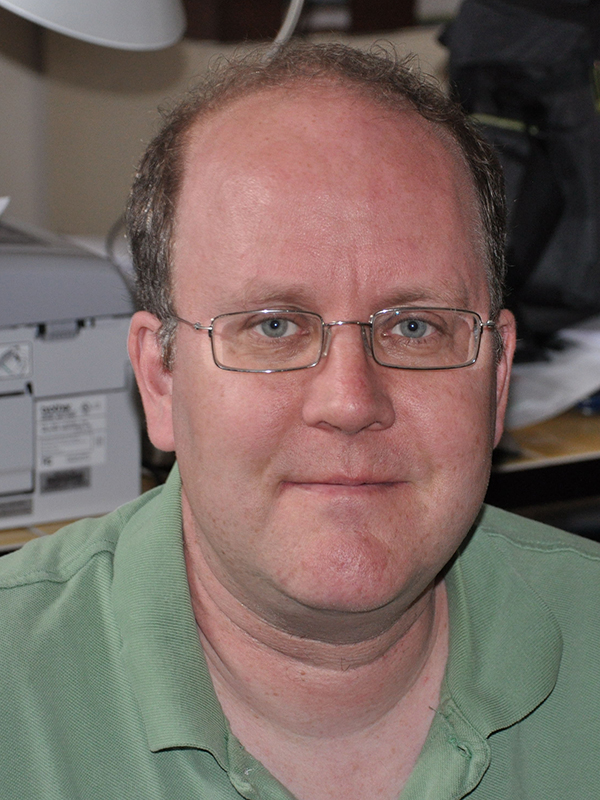Dr. Hugo Soudeyns
HIV and HCV in Mother and Child
Centre du Recherche du CHU Sainte- Justine
 Dr. Hugo Soudeyns, Professor at Université de Montréal and researcher at CHU Sainte-Justine, has been involved with HIV research since the early years of its emergence. He has seen a considerable amount change over this time, from knowing little about the virus at the outset to the advent of antiretroviral therapies. Yet, despite all the research into HIV, comparatively little is known about the dynamics of infection in children. As part of the Canadian Initiative for HIV Cure Research—funded through a partnership between the Canadian Institutes of Health Research (CIHR), the Canadian Foundation for AIDS Research (CANFAR) and the International AIDS Society (IAS)—Dr. Soudeyns, his colleagues, and clinicians at children’s hospitals across Canada are working to change that.
Dr. Hugo Soudeyns, Professor at Université de Montréal and researcher at CHU Sainte-Justine, has been involved with HIV research since the early years of its emergence. He has seen a considerable amount change over this time, from knowing little about the virus at the outset to the advent of antiretroviral therapies. Yet, despite all the research into HIV, comparatively little is known about the dynamics of infection in children. As part of the Canadian Initiative for HIV Cure Research—funded through a partnership between the Canadian Institutes of Health Research (CIHR), the Canadian Foundation for AIDS Research (CANFAR) and the International AIDS Society (IAS)—Dr. Soudeyns, his colleagues, and clinicians at children’s hospitals across Canada are working to change that.
On the heels of the report of the Mississippi baby, a single instance of a functional cure for HIV after treatment with antiretroviral drugs at birth, Dr. Soudeyns and his colleagues are in the process of forming a Canada wide study of similar cases. “This practice of treating the child with antivirals very early after birth when the mother has a detectable viremia is something that has been commonly done in Canada for many years to prevent transmission more effectively,” explains Dr. Soudeyns. “My colleagues and I realized that there were a number of children that might fit the Mississippi baby picture here.” Their recent publication regarding infection in these children has shown that a small number have undetectable viral loads. However, the Canadian children are still on treatment, so further research needs to be conducted to determine whether they are in fact ‘cured’. The ongoing project will also investigate fundamental questions about how HIV evolves in children. “In immunological terms and in terms of HIV, children are not simply small adults,” says Dr. Soudeyns. “They have completely different immune systems and the disease evolves differently.”
The numerous CIHR supported groups she is involved with – including the CIHR Social Research Centre in HIV Prevention, the CIHR Centre for REACH, CIHR Canadian Trials Network, and Universities Without Walls HIV research training program – embody her philosophy of community engagement. Her recent work in collaboration with the BC REACH team, and led by people living with HIV, is examining stigma in BC as part of a larger international initiative called the People Living with HIV Stigma Index Project. The project helps people living with HIV to develop, implement, and analyse the results from a survey about issues related to stigma, and use the results as a tool for change. The BC REACH team is also working on a housing study (Positive Living, Positive Homes) supported by a CIHR HIV/AIDS Community Based Research operating grant. “Housing is health and health is housing. If you don’t have a good space to live in, you can’t manage your health well,” says Dr. Worthington.
The other aspect of Dr. Soudeyns research efforts looks at hepatitis C virus (HCV), which shares a similar epidemiological niche to HIV. Even less is known about HCV during pregnancy and mother to child transmission than HIV. The difficulty with HCV infection during pregnancy is the lack of available treatment. “With HIV we can prevent transmission efficiently. With HCV we don’t have the tools, so even though the transmission rate is lower, we don’t have any means to prevent it,” explains Dr. Soudeyns. HCV is a chronic infection and the child will go on to develop liver problems. Dr. Soudeyns and his clinician colleagues are following mothers with HCV throughout their pregnancy and their children after birth. “We are asking pretty fundamental questions like, when does transmission to the baby occur and what viral variants are transferred?” In some patients, co-infection with HIV adds another layer to the complexity, and his team is looking at how co-infection alters disease course of HCV throughout the pregnancy.
As a basic science researcher, Dr. Soudeyns gives much of the credit to the clinicians for the work they do with patients. “The pediatricians are the soul of the projects, they are the people who treat the children and work with the families.” And working with patients is a critical part of why Dr. Soudeyns does the work he does. “Working in the health research field, working in humans, is something that I have done since the beginning. I truly believe in it,” says Dr. Soudeyns. “There is a lot of suffering that is brought on by infectious diseases, not just HIV and HCV. I believe it is our goal and our mission to alleviate that as much as possible.”
The Canadian Association for HIV Research (CAHR), the CIHR HIV/AIDS Research Initiative, CANFAR, the CIHR Canadian HIV Trials Network (CTN) and the Canadian HIV Vaccine Initiative (CHVI) Research and Development Alliance Coordinating Office (ACO) would like to thank Dr. Soudeyns and his colleagues for their significant contributions to our understanding of HIV. Their work is part of a larger Canadian research effort that is making a difference in the lives of those affected by HIV and HCV in Canada and around the world.
- Date modified: